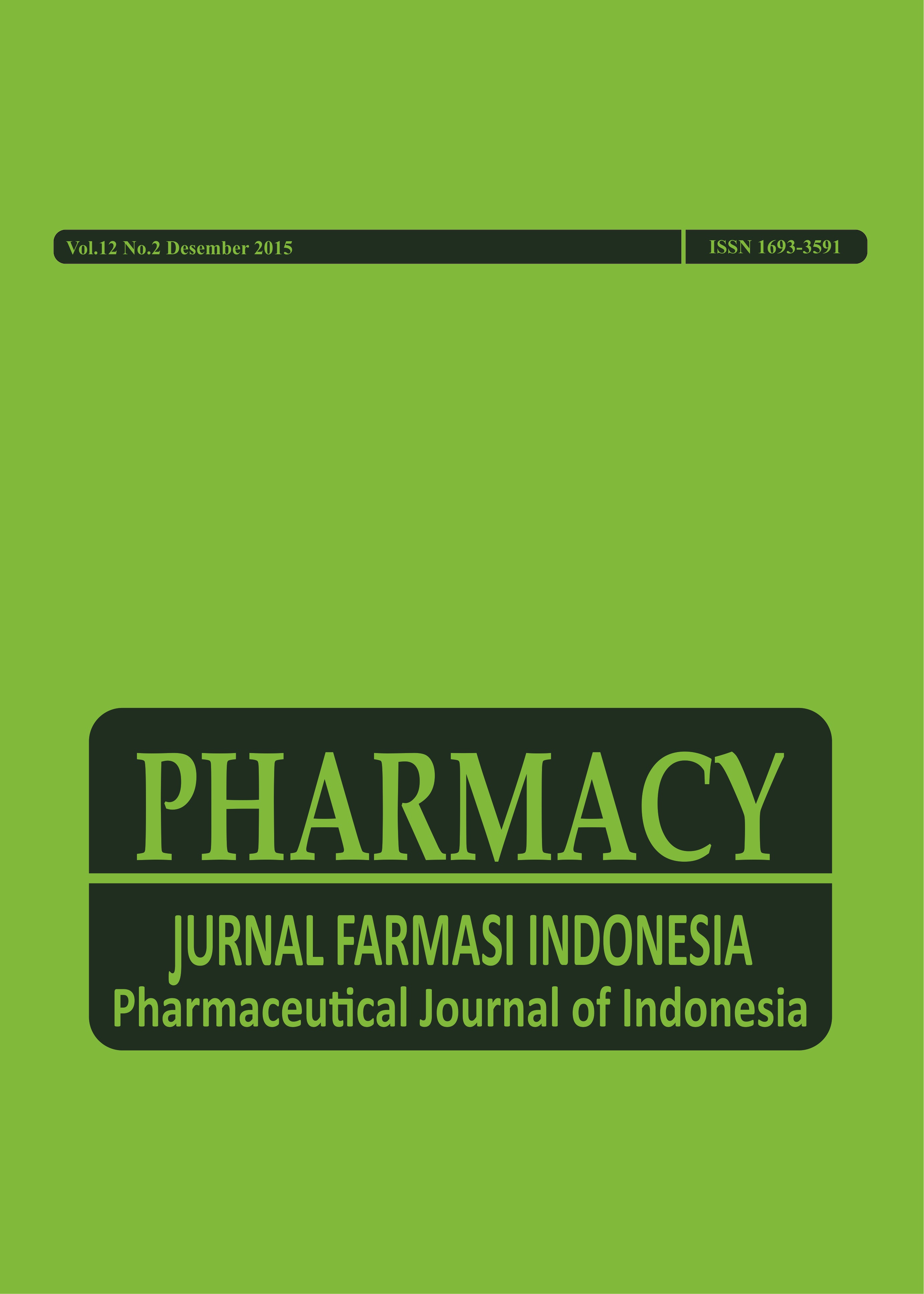Efektivitas Rebusan Daun Salam (Syzygium polyanthum) Terhadap Penurunan Kadar Asam Urat Dalam Darah Mencit Putih Jantan
Abstract
ABSTRAK Hiperurisemia adalah suatu keadaan yang ditandai dengan meningkatnya kadar asam urat dalam darah. Daun salam dipercaya mampu menurunkan kadar asam urat darah, karena memiliki kandungan flavonoid, tanin, dan minyak asiri 0,05% yang terdiri dari eugenol dan sitral sebagai diuretik (peluruh kencing) dan analgesik (penghilang nyeri). Penelitian ini bertujuan untuk mengetahui efektifitas rebusan daun salam terhadap penurunan kadar asam urat dalam darah mencit putih jantan. Penelitian ini merupakan penelitian eksperimental dengan desain Pre and Post Test Controlled Group Design. Sampel pada penelitian ini adalah 24 ekor mencit putih jantan, dibagi dalam 4 kelompok. Analisa statistik mengunakan program SPSS 17.0 for Windows. Uji ANOVA dan Post Hoc Test digunakan sebagai uji statistik untuk melihat perbedaan antara masing-masing kelompok dan uji T untuk melihat perbedaan sebelum dan sesudah pemberian rebusan daun salam. Hasil uji ANOVA menunjukkan hasil yang signifikan p=0,000 (p0,05). Dari hasil penelitian tersebut dapat disimpulkan bahwa ada perbedaan kadar asam urat pada kelompok sampel mencit putih jantan setelah pemberian rebusan daun salam. Kata kunci: asam urat, daun salam, mencit putih, uji anova. ABSTRACT Hyperuricemia is a condition characterized by increased levels of uric acid in the blood. Bay leaves is believed to be able to lower blood uric acid levels, because it contains flavonoids, tannins, and 0.05% essential oils consisting of eugenol and citral, and active as a diuretic and analgesic. This study aims to determine the effectiveness of the decoction of bay leaves to decrease uric acid blood level of white male mice. This research is an experimental research design with Pre and Post Test Controlled Group Design. Samples in this study were 24 male white mice divided into 4 groups. Statistical analysis using SPSS 17.0 for Windows. ANOVA and Post Hoc Test was used as a statistical test to analyze the difference between each group and the T test to analyze the difference before and after administration of decoction of bay leaves. Results of ANOVA showed significant results p=0.000 (p0.05). From the results, it can be concluded that there are differences in uric acid blood level of white male mice after administration of decoction of bay leaves. Key words: ANOVA test, bay leaf, gout, white mice.References
Adi, L.T. 2006. Tanaman obat dan jus untuk asam urat dan rematik. Depok: Agro Media Pustaka. Adib, M. 2011. Pengetahuan praktis ragam penyakit mematikan yang paling sering menyerang kita. Yogyakarta: Buku Biru. Dinas Kesehatan Provinsi Jawa Tengah. 2007. Survailes penyakit tidak menular pada puskesmas dan rumah sakit di Jawa Tengah. Semarang: Dinkes Propinsi Jawa Tengah. Isselbacher, K.J., Braunwald, E., Wilson, J.D., Martin, J.B., Fauci, A.S., Kasper, D.L. 2000. Prinsip-prinsip ilmu penyakit dalam. Yogyakarta: EGC. Kasper, D., Braunwald, E., Fauci, A., Hauser, S., Longo, D., Jameson, L. 2004. Harrison’s principles of internal medicine. In Wortmann, R. (editor). Disorder of purine and pyrimidine metabolism. 16th edition. New York: McGraw-Hill Profesional. Sinaga, A.F., Widdhi, B., Widya, A.L. 2014. Uji efek etanol daun salam terhadap penurunan kadar asam urat tikus putih jantan galur wistar yang diinduksi potasium oksalat. Laporan. Program Studi Farmasi, FMIPA Universitas Sam Ratulangi, Manado. Sustrani, L., Alam, S., Hadibroto, I. 2007. Asam urat: informasi lengkap untuk penderita dan keluarganya. Jakarta: Gramedia Pustaka Utama. Sutanto, T. 2013. Asam urat deteksi, pencegahan, pengobatan. Yogyakarta: Penerbit Buku Pintar.
Downloads
Published
How to Cite
Issue
Section
License
Authors who publish with this journal agree to the following terms:
- Authors retain copyright and grant the journal right of first publication with the work simultaneously licensed under a Creative Commons Attribution 4.0 International License that allows others to share the work with an acknowledgement of the work's authorship and initial publication in this journal.
- Authors are able to enter into separate, additional contractual arrangements for the non-exclusive distribution of the journal's published version of the work (e.g., post it to an institutional repository or publish it in a book), with an acknowledgement of its initial publication in this journal.
- Authors are permitted and encouraged to post their work online (e.g., in institutional repositories or on their website) prior to and during the submission process, as it can lead to productive exchanges, as well as earlier and greater citation of published work (See The Effect of Open Access).






